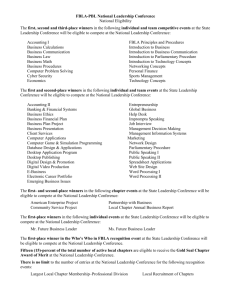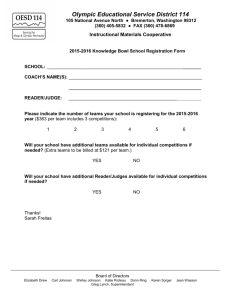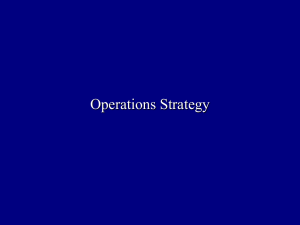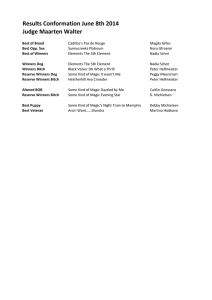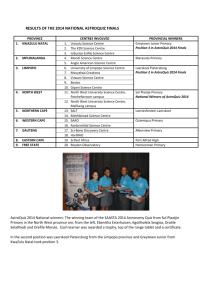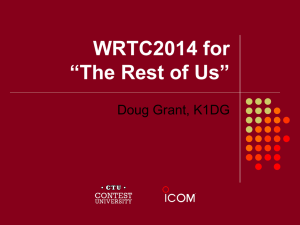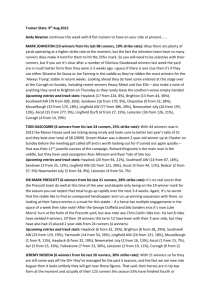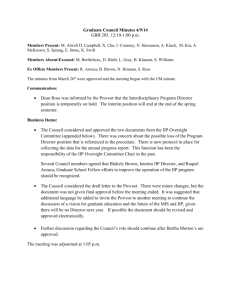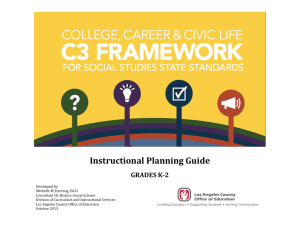Oral Reading Policy
advertisement
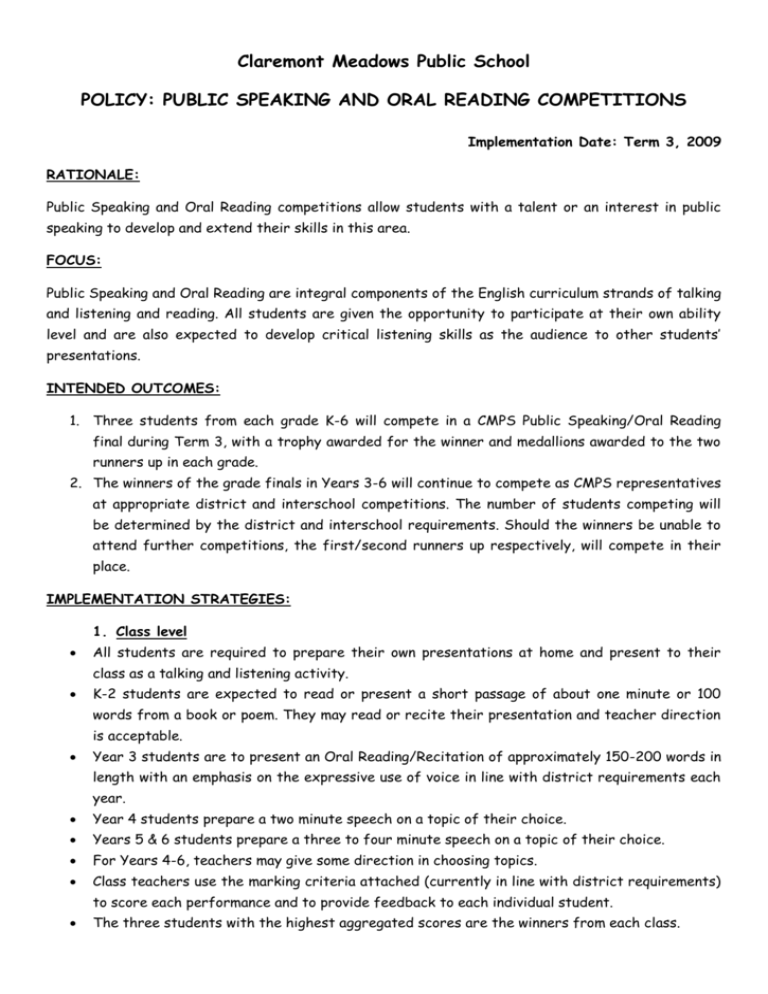
Claremont Meadows Public School POLICY: PUBLIC SPEAKING AND ORAL READING COMPETITIONS Implementation Date: Term 3, 2009 RATIONALE: Public Speaking and Oral Reading competitions allow students with a talent or an interest in public speaking to develop and extend their skills in this area. FOCUS: Public Speaking and Oral Reading are integral components of the English curriculum strands of talking and listening and reading. All students are given the opportunity to participate at their own ability level and are also expected to develop critical listening skills as the audience to other students’ presentations. INTENDED OUTCOMES: 1. Three students from each grade K-6 will compete in a CMPS Public Speaking/Oral Reading final during Term 3, with a trophy awarded for the winner and medallions awarded to the two runners up in each grade. 2. The winners of the grade finals in Years 3-6 will continue to compete as CMPS representatives at appropriate district and interschool competitions. The number of students competing will be determined by the district and interschool requirements. Should the winners be unable to attend further competitions, the first/second runners up respectively, will compete in their place. IMPLEMENTATION STRATEGIES: 1. Class level All students are required to prepare their own presentations at home and present to their class as a talking and listening activity. K-2 students are expected to read or present a short passage of about one minute or 100 words from a book or poem. They may read or recite their presentation and teacher direction is acceptable. Year 3 students are to present an Oral Reading/Recitation of approximately 150-200 words in length with an emphasis on the expressive use of voice in line with district requirements each year. Year 4 students prepare a two minute speech on a topic of their choice. Years 5 & 6 students prepare a three to four minute speech on a topic of their choice. For Years 4-6, teachers may give some direction in choosing topics. Class teachers use the marking criteria attached (currently in line with district requirements) to score each performance and to provide feedback to each individual student. The three students with the highest aggregated scores are the winners from each class. 2. Grade Semi-Finals The three class winners then compete in a grade semi-final with their grade/stage peers as the audience. Ideally, this takes place in the hall. K-2 will use a microphone while 3-6 are required to use voice projection as per the expectations of district competitions. Class teachers each mark the student’s presentations independently using the attached criteria and a designated teacher collates the results. The three students with the highest aggregated score are the winners from each grade. 3. School Grade Finals The three winners from each grade then compete in the Oral Reading/Public Speaking Final with parents/visitors and K-2/3-6 students respectively as the audience in the hall. An independent adjudicator decides the overall winner and two runners up from each grade. Adjudicators may be invited from other schools or a CMPS primary teacher may adjudicate for the K-2 component. The overall winner of each grade receives a trophy and their name is engraved on a perpetual plaque. The two grade runners up each receive a medallion. Other grade semi-finalists not competing in the final receive a certificate acknowledging their achievement. RESOURCES: Marking Criteria – Attached. This is currently consistent with district and regional marking criteria, however, is subject to change. Perpetual Trophies K-2/3-6 are kept in the foyer display cabinet in the Administration block. Prizes for each grade – winner’s trophy, runners up medallions, certificates. Independent adjudicator for grade finals K-2/3-6. STAFFING CONSIDERATIONS: Designated staff members coordinate K-2 section and 3-6 section respectively. The staff coordinators are responsible for ordering the trophies, engraving the perpetual trophy and organising the certificates. Funds are designated within a special purpose dissection. 3-6 Coordinator also liaises and organises district representations at appropriate venues and competitions. EVALUATION METHODOLOGY: Winners are determined using the attached scoring criteria and prizes are presented at the time of the competition. Winners names and photo (if available) to be included in the newsletter. Review Date: 2012
